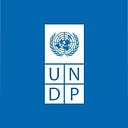Agorà — a transformational dance with urban systems
By Elina Järvelä, Innovative Finance Specialist, and Yaera Chung, Innovations for Data and Civic Engagement specialist; UNDP in Europe and Central Asia
It’s 2021. People and ideas are traveling faster than ever before, social and political movements are quickly self-organizing, and decision-making has accelerated due in part to the heightened pressure of reacting quickly to a fast-changing environment.
In ancient Greek cities, an agora was an open public space serving as a gathering or assembly area. It is the best representation of the city-state’s response at the time to accommodate the social and political order of the polis and bring different areas of city life together. For the innovation team at UNDP’s Istanbul Regional Hub, Agorà is a City Transformation Portfolio — a template that can be applied in any city system for designing and managing pandemic response and renewal plans aiming for urban transformation.

In our current situation, there is a lot of uncertainty about what will happen “next”, making it much harder to make strategic decisions and predict the outcomes of planned interventions. The Covid-19 pandemic made the systemic effects across all sectors all to clear.
This is also becoming more visible in the development sector, where challenges are multi-faceted and cannot be tackled through linear thinking and single-point solutions.
Too large a proportion of recent “mathematical” economics are mere concoctions, as imprecise as the initial assumptions they rest on, which allow the author to lose sight of the complexities and interdependencies of the real world in a maze of pretentious and unhelpful symbols. — J.M. Keynes, Economist and Author of General Theory of Employment, Interest and Money.
As both arenas of disease outbreaks and major socio-economic engines, cities are at the centre of the crisis and responses to it. But all social systems, such as cities, are complex in nature. Complexity as such is not the issue at hand. Our way of responding to it is.
Our current responses and organizational cultures are often ill-equipped to take on the uncertainty and the systemic challenges we face. We have a tendency towards saying that we know what the problem is and how to solve it. In this linear thinking, we too often oversimplify the problems and their evolving dynamics, hampering us from addressing the deeply rooted, systemic issues.
“No particular games should be expected to predict the future…Good simulations are not about coming up with a solution to put on a shelf. At best, they inform a continuing process…iterative learning is part of a healthy policy process, and policymakers may pay closer attention to replicated findings.” — Reid Pauly, Assistant Professor of Nuclear Security and Policy at Brown University
Designing responses with a systems approach takes time and new types of capabilities and funding modalities, which may be difficult during a pandemic where the urgency to respond leaves little room to explore, learn and adapt.
Since the start of the pandemic, our team has been working with the Chora Foundation to think through how we can better support UNDP country offices and their urban partners to tackle the uncertainties; to move away from single projects into more systemic approaches. Cities are tackling global SDG challenges on a local level. Poverty, inequalities, unemployment and air pollution are all outcomes of interconnected systems, which require new types of policy design and implementation.
We started with a set of questions:
- What are the characteristics of cities and pandemics?
- How can we identify and visualize the system that we are working with?
- Are there general elements that are common to urban systems?
- What are common interactions and ‘attractors’ in urban systems?
- How to contextualize the template in local contexts?
- How can we identify our role in the system?
- How is portfolio design different from project design?
- How could we better enable learning in the portfolio process?
And our solution to these was a set of design tools and service offers to help country offices and their urban partners to integrate a more systemic lens into their work through the portfolio design and management practices, and help cities build their urban transformation portfolios.
This set gives cities a unique decision-making approach to design actions and take decisions concerning pressing issues, acknowledging their complexities and fast-evolving dynamics. To look beyond the surface of seeing “events” into identifying patterns, structures and values of the system.
In short, Agorá’s tools and processes enable cities to get access to the spatial representation of the urban system, which can be contextualized, build understanding of common urban system attractors, guide them in identifying interactions and relationships in their local system, support in mapping and making sense of the current interventions and provide new entry points for their urban programming, where connected interventions and constant learning and adaptation create the value.
As Donella Meadows has wisely put it: “Systems can’t be controlled, but they can be designed and redesigned. We can’t impose our will upon a system. We can listen to what the system tells us and discover how its properties and our values can work together to bring forth something much better than could ever be produced by our will alone. We can’t control systems or figure them out. But we can dance with them!”
So we welcome you to the dance floor and invite you to follow us on our journey to develop tools and capabilities for urban transformation and apply them in practice with our country offices and partners.
This article is the first in our Agora series that will follow our work on urban transformation and portfolio design and management. The next articles will dive deeper into the Agorá process insights and learnings, introducing the design tools and processes in detail.
